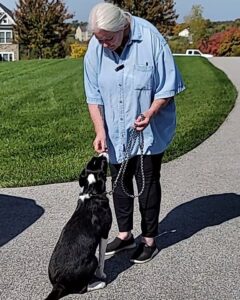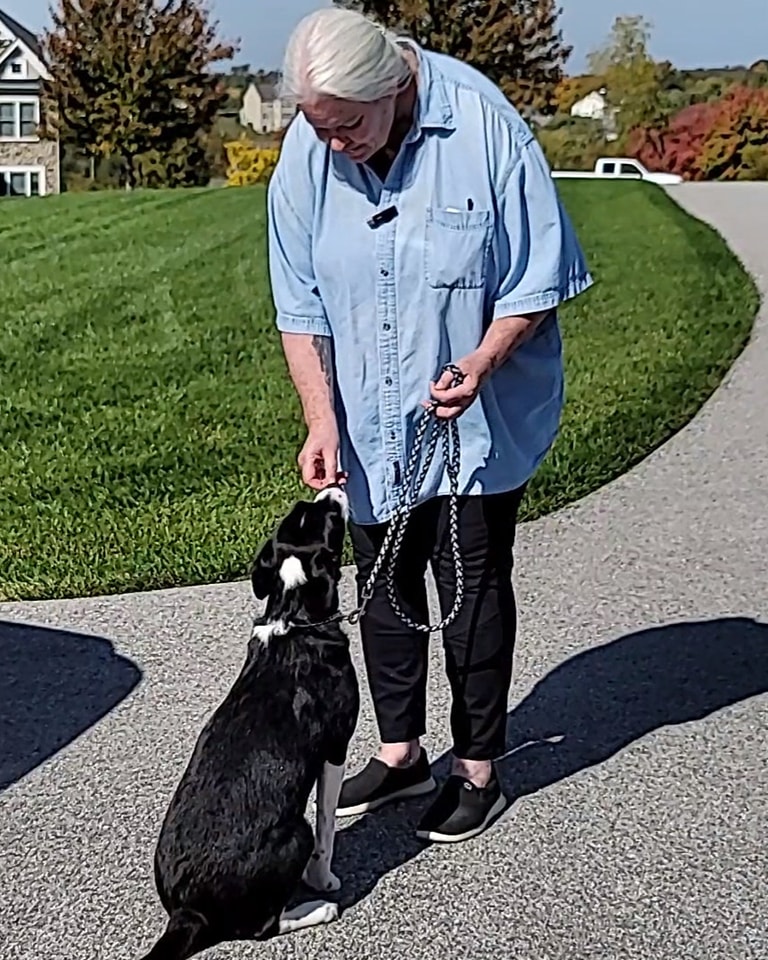 Want to learn how train a reliable recall to your dog? There’s no big secret. It just takes a little practice and a lot of patience.
Want to learn how train a reliable recall to your dog? There’s no big secret. It just takes a little practice and a lot of patience.
There is nothing harder to overcome in a dog than a poisoned recall cue.
You know the one- you call the dog to come to you, the dog refuses or dances around, and you get frustrated and angry and start bellowing at the dog to come to you.
We’ve all done it. It’s the primary reason dogs refuse to come to their owners when they are called.
The dog learns over time that your recall command means you are mad and to keep away from you.
Owners don’t intend to poison the cue, but 100% of every dog that comes to us for remediation has learned that the recall command is something to be suspicious of.
So here’s a handful of rules for teaching your dog a reliable recall:
1) Never give your dog a command that you cannot enforce. Your dog cannot refuse if it’s wearing a leash and collar, and you happen to be holding the leash.
2) ALWAYS ALWAYS ALWAYS positively reinforce honest effort. If your dog comes to you, praise the dog SINCERELY and offer something of value in return for that effort.
3) Don’t run your dog down if it refuses or is reluctant to come to you. You did that, not the dog. You breached a sacred trust, and you have to earn it back. It starts by not chasing the dog because you planned poorly and are now frustrated and angry.
4) 100% of recalls should be positively reinforced.
5) The recall should be the behavior you practice the most, with the greatest ROI for the dog. If every time you call your dog, you are locking him up, leaving him or any other activity the dog finds de-motivating, you are diminishing the value of the recall.
6) NEVER NEVER NEVER punish your dog for coming to you. I don’t care what the dog did before that, but if you’re not adhering to the short list of things above, that’s a YOU problem, not a dog problem.
Think about it. When you were a kid and you heard your mom shout your first, middle, and last name, you knew you were in for it.
You didn’t want to come to that, why do you think your dog would?
There is really no Ancient Dog Training Secret to training your dog a reliable recall. We do it every day. Want to learn how? Contact us! We are only an email away.



Rule #1 says you can’t recall when they are off leash. I have a gun dog who obeys almost 100% of the time on his long check cord, or when he’s playing in the yard. But when it comes to the hunt, or even a long off-leash exercise session in the woods, he will ignore me when his prey drive has kicked in. Can you share info about how to have better reliability of recall when they are off leash? Does it simply come down to reinforcing the basics over and over?? Thanks.
Rule #1 is mandatory when the dog is learning. Once the dog has learned, there’s absolutely no reason it can’t enjoy a life leash-free. One of the biggest mistakes people make is giving a dog too much freedom before the dog understands that commands aren’t suggestions, but are actually requirements. I see a lot of folks that think they can address the behavior ‘later’ or only ever try to reinforce it when they need it. The recall is one of those commands that you start in early infancy and reinforce throughout the dogs life. There is no reason a dog can’t learn to shift drives and cooperate. Teaching the dog to respond even during exposure to competing interests takes time, and a review of the basic tenets of cooperation. Don’t call the dog to punish it doesn’t just mean correcting for a past transgression, it also means that there should be something reinforcing each and every time the dog comes to you willingly. A word of praise, a scratch under the ear, a treat or access to a game will keep him sharp and willing. Too many times folks call their dogs to them, leash them up, crate them, do things to them the dogs don’t enjoy…
If for every one time I do something my dog doesn’t like, like taking it away from play, or other enjoyable activity, I am going to repeat the recall 20 times where there are no demands whatsoever; a release back to play, a reinforcement of some kind, or just a short communal period where we just practice being together.